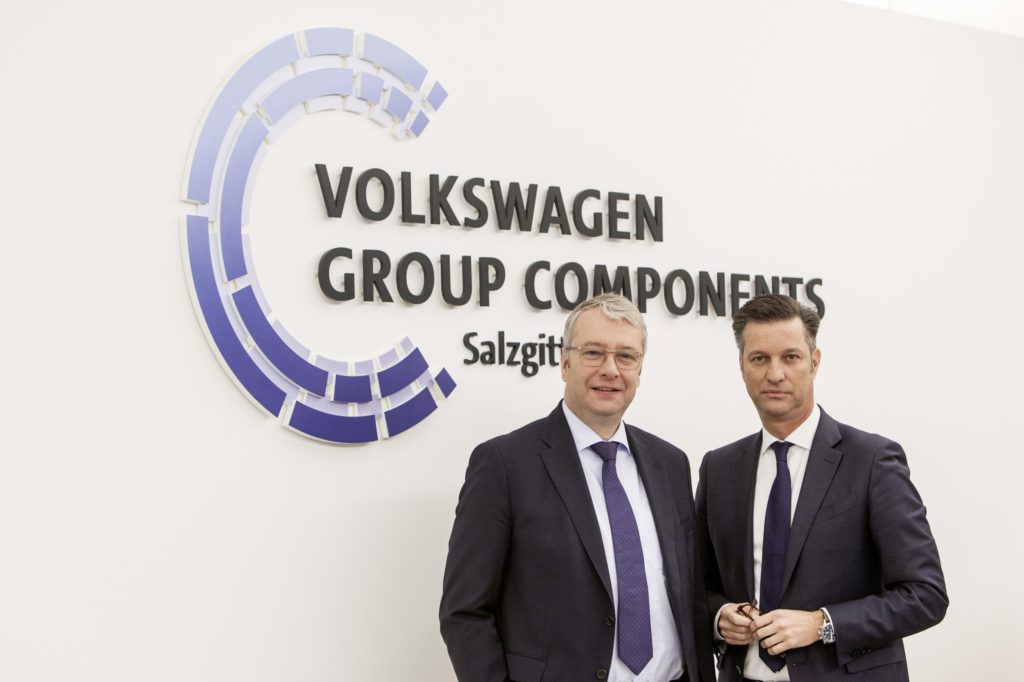VW reorganises components business to free funds for EV development
28 January 2019

28 January 2019
Volkswagen (VW) Group has reorganised its component division in order to free up funds for investment in its electric vehicle (EV) programme.
The German business has arranged all of its parts businesses into one new brand, reinforcing its in-house supplier of components including engines, gearboxes, electric drive systems, steering systems and seats – at the same time as consistently leveraging synergy effects.
Stefan Sommer, member of the Volkswagen Group board of management responsible for Components and Procurement, comments: ′We are consistently developing cross-brand positioning for Group Components, strengthening its competitiveness. Thanks to our manufacturing depth and product strength, we can measure ourselves with our best competitors. We are now sharpening our profile in the e-mobility field. Group Components is assuming end-to-end responsibility for the battery – from the development of cell production competence through to recycling. This is a key step for the entire Group.’
The move, based on a pact, has already allowed the company to achieve cost savings totalling €750 million at plants in Germany from 2016 to the end of 2018. By 2025, the company believes it will be able to increase this to a total of €2 billion. Any money saved by the integration will go on e-mobility, the company says.
Chairman of the board of management of Volkswagen Group components, Thomas Schmall, comments: ′We are investing massively in e-mobility. In 2019 and 2020 alone, investment in the production of e-mobility components will reach €870 million throughout the Group. The share of investment in e-mobility components has risen from 5%to the current figure of 40%. All in all, we are investing a total of €3.8 billion in the production of e-mobility components up to 2023 within the framework of the current planning round.’
Over the past three years, consistent preparations were made for the establishment of Group Components as an independent brand. This development is based on the orientation of the product portfolio towards volume and scale effects and an increase in the efficiency and productivity of the plants. In 2015, the product portfolio was already analysed with a view to focusing on products that would be competitive in the long term both in development and in production. Products that did not have a viable future or were uneconomical were deleted from product plans.
The changeover from conventional powertrains to e-mobility is an issue that is more important for Group Components than for any other unit of the Volkswagen Group. The division brand produced more than 10 million conventional vehicle engines and over 8 million gearboxes, for example, in 2018. This is why the structure of the business areas was also slimmed down in connection with the establishment of the brand. The business areas ′engine and foundry’ have been merged and the ′e-mobility’ business area has been newly established. The portfolio is rounded off by the three business areas ′gearbox and electric drive’, ′chassis’ and ′seats’. The plastics business area has been transformed and integrated into the production organisation of the Volkswagen brand. Each of the five business areas is responsible for its portfolio strategy and the overall process.
VW Group is aiming to introduce its last combustion engine vehicles with its next model refresh in 2026. Following this, the group will focus on alternative fuel vehicles as carmakers come increasingly under pressure to meet strict CO2 targets. The German carmaker announced last year that it would push forward with its electrification strategy earlier than planned.